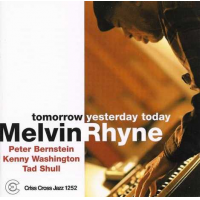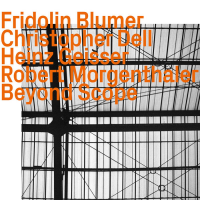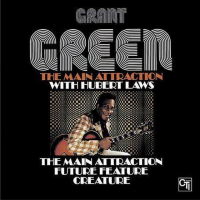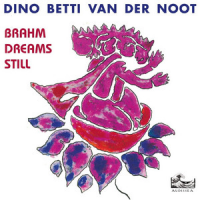Home » Jazz Articles » Liner Notes » John Coltrane: Song Of Praise: New York 1965 Revisited
John Coltrane: Song Of Praise: New York 1965 Revisited
Have you ever considered yourself a witness to history? If you answered in the affirmative, let me posit that it was only after time and reflection that this notion occurred to you. Did the soldiers standing in the mud and muck at the Somme during the Great War in 1916 comprehend the significance of the moment? And more recently, did the protesters in 2020 who spontaneously took to the streets for social justice grasp the consequences of their actions? The significance of the moment is invariability lost to the witness, with history written after the fact.
The same can be said of celebrated musical performances. Miles Davis at the Newport Jazz Festival in 1955 and Duke Ellington in 1956 are two examples of shifts in an artist's career that can only be appreciated after that fact. That same interpretation can be applied to John Coltrane's 1965 stand at the Half Note, heard here. The Half Note was a small restaurant/bar owned by the Canterinos, an Italian-American family, and located at Hudson and Spring streets in New York City. Similar to Coltrane's 1957 five month collaboration with Thelonious Monk at the Bowery's Five Spot Café, his quartet's regular engagement at the Half Note in the early 1960s was a watershed of sorts for the great man's music. The question remains, did the audience (the witnesses) recognize this event as a critical moment in the history of Coltrane's music?
Taking all things into consideration, the answer is most likely, no. It is only with hindsight we know the classic Coltrane quartet (1962-1965), heard here with pianist McCoy Tyner, bassist Jimmy Garrison, and drummer Elvin Jones would soon be dismantled, but dismantled by addition. Coltrane would add several musicians to his quartet for the subsequent recordings Kulu Se Mama (1965), Live in Seattle (1965) and more than a dozen, including Pharoah Sanders, Archie Shepp, Freddie Hubbard, Marion Brown, and John Tchicai for his 1965 Ascension dates. Tyner would leave the band late in the same year, replaced by Alice Coltrane. Jones left in 1966 to tour with Ellington, with only Garrison remaining.
Another reason the Half Note audiences would not recognize this coming sea change is that Coltrane never abandoned his prior innovations, always incorporating and reworking them into his current performances. These innovations would act as markers along the way. With the mythical sessions Giant Steps (1959), My Favorite Things (1960), and A Love Supreme (1964), Coltrane was creating his musical equivalent to the Rosetta Stone, a key to some previously undecipherable mystery or unattainable knowledge. The sheer geometric and mathematical complexity of Giant Steps in 1959 announced to the world that where other musicians were playing checkers, Coltrane was playing chess. A year later he transformed the Richard Rodgers and Oscar Hammerstein waltz from the popular play and movie, The Sound Of Music, into an amalgamation of Western and Eastern music. My Favorite Things was a perfect vehicle for the non-jazz listener to appreciate the mechanics of improvisation within a jazz performance. Finally, A Love Supreme is one of only a few perfect musical recordings in the history of jazz, so much so, that Coltrane only performed the music live on a few occasions. Those three recordings having obtained a mystical, almost transcendental quality, appear as if they exist outside of time.
These Half Note recordings from March 26 and May 7, 1965, two dates from an extended stay at the club, were captured as a radio broadcast. Ezz-thetics has re-sequenced the music here to demonstrate Coltrane's approach to incorporating all his inventions into a performance, while also mapping a future to his music.
The title track "Song Of Praise" was first introduced live to the Half Note audience in March before it was recorded in the subsequent April 27th studio session, The John Coltrane Quartet Plays (1965). The patrons must have heard the similarities, as the performance parallels aspects of A Love Supreme. While the original recording of "My Favorite Things" was 14 minutes, here Coltrane extends it past 20; in the future the popular cover tune would be performed on countless occasions at a much longer length. It was, like all his music, a vehicle for exploration and experimentation. The same can be said for Mongo Santamaria's "Afro Blue." First recorded by Coltrane's quartet in 1963, it was a go-to composition for the quartet to improvise and investigate possibilities, here McCoy Tyner's energetic solo fuels Jones' robust drumming. While the audience would have been familiar with the first three tracks, "One Up, One Down" would have registered only in retrospect. The performance, now considered one of Coltrane's greatest solos, is an exhaustive exhibition of group and solo organization. First driven by the quartet sound and subsequently in duo with Jones, which foreshadows future duos with Rashied Ali, Coltrane performs a sort of musical catharsis, working and reworking his past sounds while previewing innovations to come. Where the Half Note audience may have been shocked by what they witnessed in 1965, listeners decades later can appreciate this vital step in the evolution of Coltrane's sound.
Liner Notes copyright © 2026 Mark Corroto.
Song Of Praise: New York 1965 Revisited can be purchased here.
Contact Mark Corroto at All About Jazz.
Mark misses his dogs Louie & Freddy, but endeavors daily to find and listen to new and interesting sounds.
Track Listing
Song of Praise; My Favorite Things; Afro Blue; One Down, One Up.
Personnel
Additional Instrumentation
John Coltrane: tenor saxophone (1, 4), soprano saxophone (2, 3).
Album information
Title: Song Of Praise: New York 1965 Revisited | Year Released: 2022 | Record Label: Ezz-thetics
Tags
PREVIOUS / NEXT
Support All About Jazz
 All About Jazz has been a pillar of jazz since 1995, championing it as an art form and, more importantly, supporting the musicians who make it. Our enduring commitment has made "AAJ" one of the most culturally important websites of its kind, read by hundreds of thousands of fans, musicians and industry figures every month.
All About Jazz has been a pillar of jazz since 1995, championing it as an art form and, more importantly, supporting the musicians who make it. Our enduring commitment has made "AAJ" one of the most culturally important websites of its kind, read by hundreds of thousands of fans, musicians and industry figures every month.
























